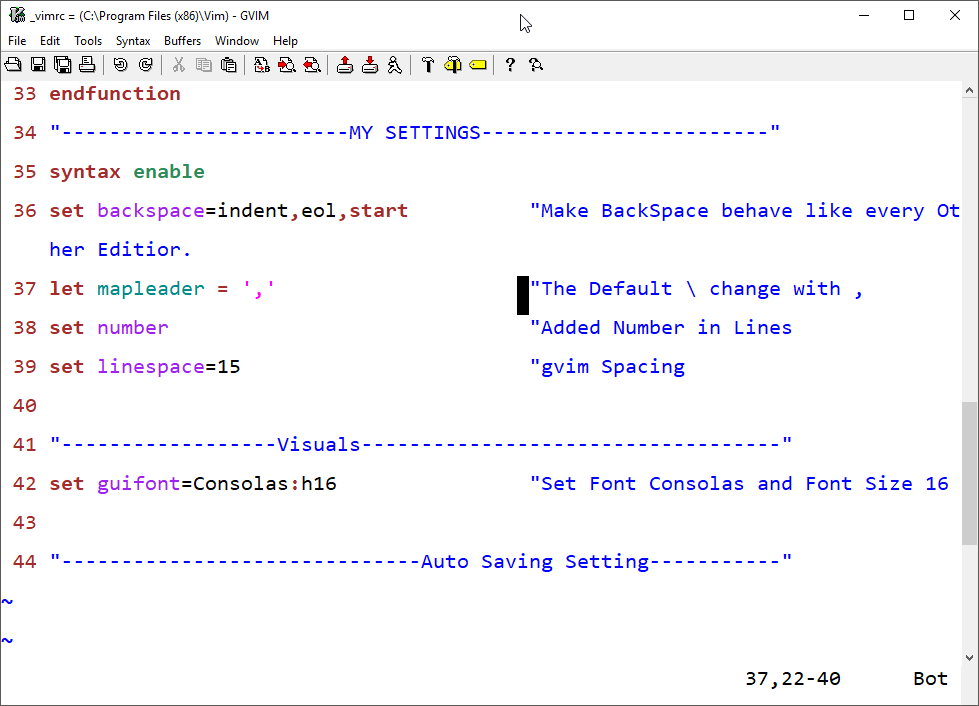

- Install vim on mac mac os x#
- Install vim on mac install#
- Install vim on mac archive#
- Install vim on mac skin#
I don't use it, but I can provide a very clean way of deploying plugins for Vim.
Install vim on mac install#
If you use Homebrew, there's already a formula for MacVim available, so you can run brew install macvim
Install vim on mac archive#
Getting the correct MacVim version for your operating system in the project website, unzip the archive file and drag MacVim.app to your Applications folder. For Macs, we have MacVim, and AFAIK two options are available: Usually, the installation is very straightforward for every operating system. You can find my Vim setup at Github.I suppose you already have Vim installed in your operating system. That should do it you should now be able to launch Vim and start using command-t. Still in a shell where system Ruby is the currently active Ruby installation, we just need to follow the installation instructions: ruby extconf.rb There’s a nice Rakefile for us there that will handle installing the C-extension. Change into the plugin directory: cd ~/.vim/bundle/command-t I opted to install it as a Git submodule and load it with Pathogen. The documentation describes how you can install it as a vimball, or straight from the source – for example using Tim Pope’s excellent Pathogen plugin. Try it by starting Vim and perform the command: :ruby puts 'Hello, world' The output of vim -version will tell you a lot, but somewhere in there is +ruby to indicate you can now run Ruby straight from Vim. If you source your shell configuration, or just start a new terminal session, you will notice the new version of Vim: $ which vim zshrc to prepend it if necessary: export PATH=/usr/local/bin:$PATH Check it with echo $PATH to see your current $PATH, and edit. Then compile and install: makeįinally, make sure /bin is in your $PATH. Note the -enable-rubyinterp – and toss in -enable-pythoninterp while you’re at it. Change into it to start the whole configure, make, make install routine. This gives you a vim directory in your current working directory.
Install vim on mac skin#
There’s more than one way to skin this cat, but I chose to clone the repository with Mercurial: $ hg clone vim The first actual step is to get the Vim source code. In a new shell session, I first switched to the stock Ruby version: $ rbenv shell system I decided to compile both against my system Ruby ( 1.8.7) as that is the least likely to be messed around with. This becomes problematic if you try to compile Vim against one version, and then try to install a plugin like command-t with a C-extension compiled against another version.

Install vim on mac mac os x#
Mac OS X comes with Ruby by default, by I use rbenv to switch between different versions. Mind the Ruby version you link toīy installing Vim with Ruby support, you link it to a particular installation of Ruby.

“No biggie”, I thought to myself, “how hard can compiling Vim be?” As it turned out, I ran into some issues with Vim immediately crashing after installation, or as soon as I tried to use the command-t. Of course, MacVim comes with Ruby support built-in, but I prefer running Vim in the terminal, so I was out of luck. It is a nice fuzzy-search plugin writing in Ruby (with a C extension), and it requires Vim with Ruby support. The other day I wanted to give the command-t plugin another go. However, Vim needs to be compiled with support for those external languages. Vim can easily be extended, not only with Vimscript but also with Ruby, Python, or whatever else.


 0 kommentar(er)
0 kommentar(er)
